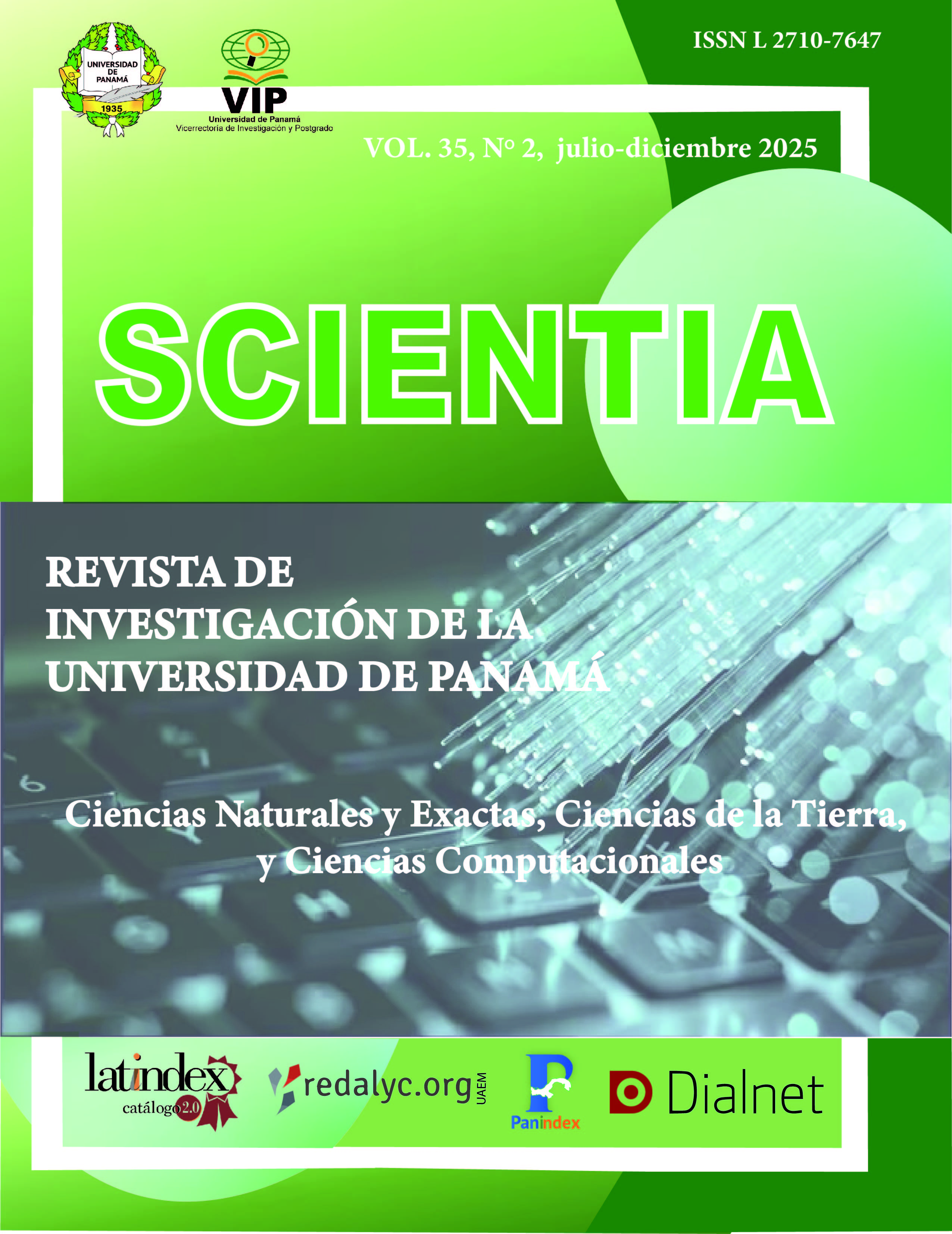

Copyright (c) 2025 Scientia

This work is licensed under a Creative Commons Attribution-NonCommercial-ShareAlike 4.0 International License.
Mature secondary tropical forests play a fundamental role in biodiversity conservation and the ecological recovery of disturbed landscapes. This study aimed to assess the floristic composition and structure of the arboreal flora in a one-hectare plot of mature secondary forest within Soberanía National Park, Panama. A total of 431 trees with a diameter at breast height (DBH) ? 10 cm were recorded, belonging to 101 species, 77 genera, and 32 families, indicating high floristic diversity. The Shannon diversity index (H’ = 4.27) suggests a highly diverse plant community. The diameter distribution showed a reverse "J" shape, characteristic of tropical forests in equilibrium, with most individuals found in the 10–20 cm DBH classes. The vertical structure revealed high complexity, with a mixing ratio of 1:4. Ficus insipida, Attalea butyracea, Terminalia amazonia, Zuelania guidonia, and Oenocarpus mapora exhibited the highest ecological importance values, highlighting their significant role in the structure and functioning of the ecosystem. These results underscore the ecological relevance of the forest as a biodiversity refuge and a source of natural regeneration, supporting the need for management and monitoring strategies aimed at protecting these forests in advanced stages of succession.